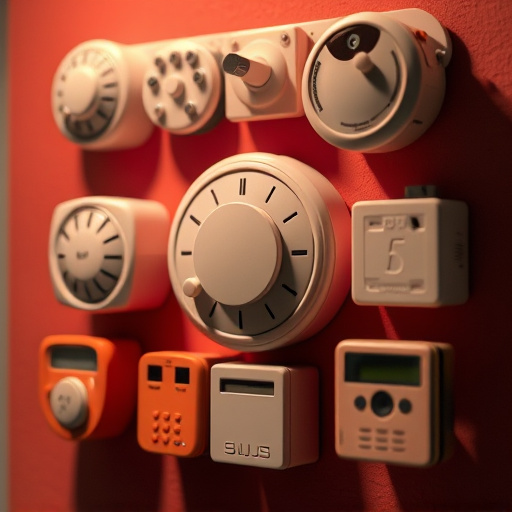This text compares three main activation types for personal alarms: manual, automatic/fall detection, and smartphone integration. Each offers unique features catering to diverse safety needs, from immediate distress signaling to high-risk scenarios and tech convenience. Automatic systems provide added safety for vulnerable individuals, while smartphone integration allows remote control and monitoring. Modern body-worn alarms offer subtle activation types, enhancing personal protection in various scenarios, ensuring swift assistance through real-time alerts and discrete distress signaling.
In today’s world, personal safety is paramount. Body-worn panic alarms have emerged as powerful tools for self-defense and emergency communication. This article explores different types of these portable devices, focusing on their activation mechanisms and how monitoring systems enhance safety. We compare various alarm types, highlighting their unique features. Understanding the benefits and use cases of personal alarms can empower individuals to make informed choices for their security. Discover how real-time monitoring transforms personal safety measures through advanced alert systems.
- Types of Body-Worn Panic Alarms: A Comparison
- Monitoring Systems: Real-Time Alerts and Safety
- Personal Safety: Advantages and Use Cases
Types of Body-Worn Panic Alarms: A Comparison
Body-worn panic alarms come in various types, each with unique features and activation mechanisms. The most common categories include:
1. Manual Activation: These devices require manual operation by pressing a button or pulling a pin to trigger the alarm. They are straightforward and reliable, often used in emergency situations where immediate attention is needed. Manual activations offer a clear and direct way to signal distress without requiring any additional action from the wearer after initiating the alarm.
2. Automatic/Fall Detection: Advanced models incorporate sensors that detect sudden falls or intense movement, automatically activating the alarm. This type is ideal for individuals at high risk of accidents or injuries, providing rapid assistance in scenarios where the wearer might be incapacitated. The automatic activation types add an extra layer of safety and peace of mind.
3. Smartphone Integration: Some modern panic alarms sync with mobile apps, allowing users to activate the alarm remotely via their phones. This feature offers flexibility and convenience, especially for those who prefer a more subtle approach or wish to leverage technology for personal safety. Smartphone-integrated models provide an additional layer of control and monitoring.
Comparing these activation types, manual remains a classic choice for immediate alerts, while automatic/fall detection and smartphone integration cater to specific needs, enhancing overall safety and accessibility.
Monitoring Systems: Real-Time Alerts and Safety
Monitoring systems play a pivotal role in enhancing safety measures associated with body-worn panic alarms. These advanced technologies offer real-time alerts, allowing immediate response to personal alarm activation types compared to traditional systems. When an individual triggers their panic alarm, whether through a press of a button or automatic detection of extreme conditions, the monitoring system comes into action.
Real-time tracking enables dispatch centers to pinpoint the exact location of the wearer, facilitating swift assistance. This capability is particularly crucial in scenarios where someone may be unable to communicate due to distress or emergency situations. By providing continuous surveillance, these monitoring systems ensure that help can arrive promptly, enhancing personal safety and security.
Personal Safety: Advantages and Use Cases
Personal safety is a top priority for many individuals, especially those who work or live in high-risk environments. Body-worn panic alarms offer a discrete yet powerful tool to enhance personal security. These devices provide peace of mind by allowing users to quickly and silently activate an alarm in case of emergency, attracting attention from nearby authorities or support personnel.
The advantages are numerous, particularly in situations where verbal communication may be difficult or dangerous. For example, first responders, security guards, or individuals with special needs can utilize these alarms as a form of silent distress signaling. Unlike traditional personal alarms that rely on loud sirens, body-worn models often incorporate subtle activation types compared to conventional methods. This ensures discreet use while still providing an effective means of personal protection in various scenarios, from patrolling high-crime areas to attending remote or isolated events.
Body-worn panic alarms with monitoring systems are transforming personal safety, offering a range of activation types compared to traditional solutions. Real-time alerts and safety features enhance peace of mind, making these devices invaluable in various scenarios. By leveraging the latest technology, individuals can now protect themselves effectively, ensuring prompt assistance during emergencies. This innovative approach to personal safety is a game-changer, especially for those who work or travel in isolated or high-risk environments.
